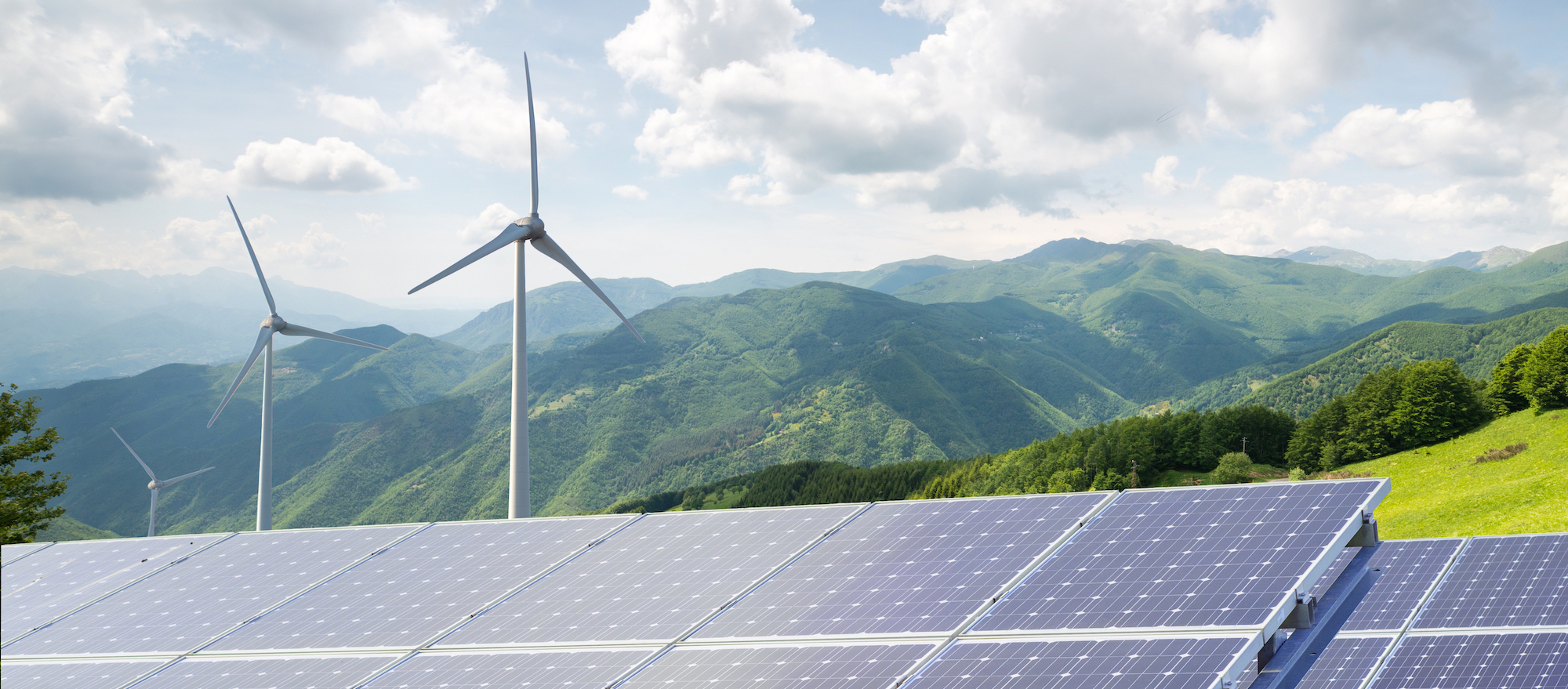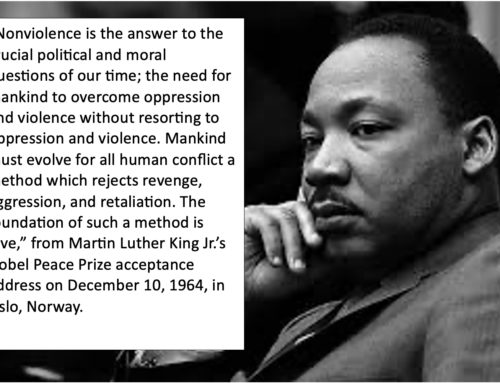
SEPTEMBER 17, 2020
As we move toward the precipice of the presidential election, we must set our sights on a Green New Deal. In this newsletter, we review the main goals a GND could achieve according to environmental movement leaders, and touch briefly on how the two major presidential candidates differ in their approaches.
We are at a pivotal moment. Over the past several months, as we have worked together to protect ourselves from the COVID-19 pandemic, most of the world has valued evidence-based science and taking preventative action to save lives. The overwhelming majority of the United States has supported protecting public health over prematurely opening the economy. We have seen massive protests in every state and across the globe demanding justice for the murders of George Floyd, Breonna Taylor, and so many others, and structural reforms to address systematic racism and police violence. We have seen that by maintaining pressure on our political representatives, we can achieve policies that were previously deemed impossible, such as spending trillions of dollars on stimulus bills, even though loopholes in those bills have been exploited by big industry including the wealthiest hospital systems. With our economy on pause, we experienced the benefits a healthier environment could bring, such as breathing cleaner air, until the West Coast wildfires began, and now our skies are darkened by smoke, a frightening sign of the climate emergency. We have seen many scientific research centers, governments, businesses, and communities across the globe almost instantaneously refocus to solve the pandemic collectively, despite the intransigence of our own dysfunctional federal government. And now, we are on the precipice of presidential election that could decide the fate of our planet.
If we can tackle this pandemic, then surely we can tackle the current economic crisis, systematic racism, and the climate crisis simultaneously. How? Green Deals.
Green Deals are popping up across the globe. In the simplest terms, Green Deals intend to prevent global warming from exceeding 1.5 degrees Celsius (2.7 degrees Fahrenheit) through regulation and legislation that expeditiously and justly transitions economies away from fossil fuels and sets targets to cut and eventually reach net zero carbon emissions by 2050.
Although environmental scientists and activists have been advocating for solutions to the growing climate crisis since the 1970s, the Paris Climate Agreement of 2015-16 marked the historic moment when every country in the world signed-on to tackle climate change. This global momentum was derailed in 2016 with the election of Donald Trump, whose administration is taking steps to withdraw from the agreement, while systematically slashing legacy U.S. environmental protection regulations. While the U.S. trails behind, other countries are leading the way with their own green deals, and in November 2019, the European Commission announced their Green Deal, which may be a good start, but is considered by many activists to be woefully inadequate.
In the United States, our efforts to tackle global warming have been re-energized by the Sunrise youth movement and Representative Alexandria Ocasio-Cortez’s Green New Deal house resolution 109 introduced on February 7, 2019. This aspirational fourteen-page document stirred up enough interest to inspire Jay Inslee, governor of Washington State, to write an extraordinarily comprehensive Green New Deal instruction manual that Joe Biden’s presidential campaign has largely adopted in two complementary plans, the Plan for a Clean Energy Revolution and Environmental Justice, also referred as a Green New Deal, and the Build Back Better infrastructure energy plan.
Biden’s comprehensive proposal has three main goals: 1. ensure a 100% clean energy economy and net-zero emissions no later than 2050, 2. investment in clean energy and climate research, 3. rapidly deploy clean energy innovations across the economy, especially in underserved communities.
The Trump Campaign has an Energy and Environment, anti-Green New Deal plan that would continue to increase fossil fuel and coal production, and through the Affordable Clean Energy Rule, roll back regulations that protect the environment and public health.
A Green New Deal would implement a just transition to a sustainable, non-fossil fuel economy. Biden’s proposal aligns with environmental science recommendations by establishing an enforcement mechanism that includes milestone targets no later than 2025, and ensures a 100% clean energy economy and net-zero emissions no later than 2050. To do this, we must implement a transition to non-fossil fuels in all areas of our civilization including the following: energy, infrastructure, buildings, agriculture, transportation, clothing, packaging, etc. Thus far, the focus has been on fossil fuel-propelled transportation and energy supplies, but the GND must also address the climatic and toxic impacts of petrochemical industries’ production of plastics, fabrics, packaging, etc., now being ramped up to compensate for anticipated lower profit margins from over-expanded traditional oil and gas operations.
Biden’s plan supports protecting biodiversity by conserving 30% of America’s lands and waters by 2030, protecting public lands and waters from new gas and oil permits, providing clean water for all, and supporting farming innovations to reduce carbon emissions—the version online does NOT include any language about reducing pesticides, toxins, or plastics. Additionally, his plan supports small modular nuclear reactors which is in opposition to PSR’s mission of eliminating the threats of nuclear weapons, accidents, and waste.
At the heart of a Green New Deal we need a just transition to a fair and sustainable economy, that does not depend on expanding growth, resource consumption, and waste beyond our planetary limits, but rather on mutual cooperation and programs based on a vision of a public commons that fairly and responsibly distributes natural resources and ensures well-paying jobs. A just and equitable transition is key for engaging all nations and populations, especially for countries in the “global south,” long deprived of most material benefits by burgeoning global capitalist development, for without them, we will fail to reduce green-house gases.
In our own country, a just transition is essential given how racial, economic, and power disparities have been amplified by the pandemic that has contributed to some of the highest unemployment rates we have seen since the Great Depression, and the dual public health crises of rising death rates compounded by COVID-19 and police violence affecting Black and Brown communities. There is mounting evidence that social equity is not only morally just, but necessary for secure, stable, sustainable, and healthy economies and societies, per the World Happiness Report that was released almost a decade ago in support of a United Nations High level meeting on “Wellbeing and Happiness: Defining a New Economic Paradigm.”
Therefore, GND proposals must address social and economic injustices in order to be widely accepted and successful. The U.S. plan must build upon a resilient and socially engaged movement for change by centering the voices and active participation of all underserved communities, including indigenous peoples, communities of color, and migrant communities in the planning process, and by providing training and living-wage jobs.
Biden’s plan makes the promise to “Stand up to the abuse of power by polluters who disproportionately harm communities of color and low-income communities,” establish a new Environmental and Climate Justice Division within the Justice Department; and sets a goal that disadvantaged communities receive 40% of overall benefits of spending including remediation and reduction of legacy pollution. In addition, the green jobs program would be “worker-centered and driven in collaboration with the communities” to ensure job training, good wages, benefits, protections, and the right to form unions.
You may ask, how can we afford a Green New Deal? The pandemic has underscored our need to move beyond a police or military paradigm of “security” to an understanding that our common survival and well-being is better served by social capital investments illustrated by public and environmental health preventative measures such as universal healthcare access, wild fire prevention measures, dam renovations, and what some have advocated as a “Manhattan Project” for renewable and sustainable energy, to name just a few examples. The U.S. spends 28 times more on military security than on climate security. Driving this point home, a recent ICAN report underscores that the $138,699 spent in the world in 2019 on nuclear weapons per minute by the nuclear states would be one clear example for redirecting our resources toward a GND that would benefit, and not annihilate our civilization.
The massive benefits that we could achieve by reprioritizing our local and global budgets is underscored in a 2019 study authored by Stanford professor Mark Jacobson and colleagues claiming that investing in a GND will cost less than the economic costs of climate change-induced destruction of buildings, infrastructure, loss of productivity, and damage to human health. Published in One Earth, “Impacts of Green New Deal Energy Plans on Grid Stability, Costs, Jobs, Health, and Climate in 143 Countries,” states that it will take an initial investment of $7.8 trillion to transition to zero carbon emissions by 2050.
Biden’s proposal prioritizes the GND as a national security issue and includes federal investments of $1.7 trillion over the next ten years, and leveraging private, state, and local investments of $5 trillion plus. The Build Back Better plan would make an accelerated investment of $2 trillion dollars. These plans will be paid for by reversing Trump’s corporate tax cuts, reducing incentives for tax havens, evasion, and outsourcing, ensuring corporations pay their fair share, and closing other tax loopholes. Also included are green energy divestment and investment incentives.
These proposed expenditures seem reasonable given that the U.S. recently spent $3 trillion on only one economic stimulus package and would avoid the accumulation of an estimated $3.1 trillion annual cost in climate damages during the same period, according to the One Earth study. In addition, as green energy is increasingly becoming less expensive than fossil-fuel energy, its alternative use would save consumers $1.3 trillion a year. Of course, we would also save in reduced health costs and lives lost due to less air pollution. Instead of losing jobs, the study predicts that the 2.2 million lost fossil-fuel jobs would be replaced by 5.2 million permanent clean-energy jobs.
In summary, our tragic COVID-19 pandemic has created a unique opportunity for us to re-imagine our collective stake and retool our economic-social models toward surviving and thriving as a species. A U.S. Green New Deal developed in parallel with other global Green Deals would simultaneously tackle climate change and create more social and health equality, rather than retreating to a status quo, rapacious economic model that portends inevitable collapse of the web of life that sustains our existence.
This is a critical moment. National PSR formally endorsed the U.S. Green New Deal and they will be looking more closely at environmental justice issues. Please join our efforts to advocate for a GND during this election and beyond. We only have about ten years to cut emissions in half if we are to avoid catastrophic climate damage: we must vote, advocate, and bring these issues front and center to the next most important global climate meeting since the 2015 Paris Agreement, the Cop26 climate talks, that will be held in Glasgow in 2021.
Also, please donate generously to SF Bay PSR, so we can continue to mobilize our power as health professionals in this critical fight for our collective survival!

Committee Updates
We are looking for new members for our Nuclear Weapons Abolition and Environmental Health committees. To request to join a committee, please contact info@sfbaypsr.org for more details, including Zoom links to meetings.
SF BAY PSR Nuclear Weapons Abolition Committee
The NWAC was founded in June 2020 and is composed of health professionals and others working locally to influence public awareness, civic engagement, and national policy via California Members of Congress toward a nuclear weapons free world. Toward the latter, we endorse the Back from the Brink campaign and its policy platforms.
NEXT meeting will be on Thursday, November 12, 7:00 pm, via Zoom
Recent highlights include: participation in two-days of events and actions in August to commemorate the 75th anniversary of the bombings of Japan, including co-hosting an event on the history of the bomb and physician involvement. If you missed these events you can find links to the recordings on our website as well as more info about the NWA committee.
SF BAY PSR Environmental Health Committee
EHC members continue to work energetically during the pandemic on wide-ranging collaborative efforts to engage health professional students and institutions to address the unceasing threats of our climate to our health.
NEXT meeting will be on Wednesday, October 21, 6:30 pm, via Zoom.
Recent highlights include:
Racial, Environmental, and Social Justice for All: establishment of the SF Bay PSR Racial Equity Reading Group and a series of events on environmental justice and racial equity topics that will kick off on September 17 with The Fire Next Time, a discussion about the connections between climate change, systemic racism, and health inequities, co-sponsored by Climate Health Now. More details in the events section below and on our website.
Health Professional Education/Curriculum Development: EHC members are planning and participating in the NorCal Symposium on Climate and Pandemic Resilience in Health Care on Sept 25, organized by UCSF and Stanford students to educate and empower health care professionals to enact sustainable healthcare practices at their institutions; working within the American Academy of Pediatrics to develop climate change health education for board recertification, and a climate-focused break out session at an upcoming AAP conference; leading efforts within the American Academy of Dermatology to create webinars and a special issue of the International Journal of Women’s Dermatology dedicated to the topic of climate change and dermatology; and working within the Sierra Club, to develop a climate and health literacy curriculum within the Oakland school district.
Health Impacts of the Climate Crisis: EHC members organized the UCSF mini-medical school, “The Health Emergency of Our Climate Crisis (Part 2) which begins on October 20; will be presenting on how climate impacts mental health at the upcoming American Public Health Association; and are working with members and leaders of the California Medical Association to strengthen CMA’s awareness and actions for urgently addressing our climate emergency.
Sustainable Healthcare Systems: EHC members are joining forces with Health Care Without Harm to implement a healthcare facility contest centered around reducing meat in cafeterias and developing 2021 “plant-forward” options; advancing the American Academy of Ophthalmology’s participation in efforts to reduce medicine’s big carbon footprint; mentoring students on research and policy development to reduce the carbon footprint of academic faculty travel.
To read more please visit our Environmental Health Committee web page.
Readings & Resources
READ MORE about Green New Deals
Biden’s plans: Plan for a Clean Energy Revolution and Environmental Justice, also referred as a Green New Deal, and the “Build Back Better” infrastructure energy plan.
Trump’s Energy and Environment anti-Green New Deal plan
The Intercept: Watch A Message From the Future With Alexandria Ocasio-Cortez in which she explains the GND.
Sunrise movement: GND fact sheets
Rolling Stone: “Decarbonizing will cost trillions of dollars, but it’s an investment that will have big return — for the economy and the environment,” by Tim Dickinson
Vox: “’All hell breaking loose’: How the Pentagon is planning for climate change” an interview with Michael Klare by Alex Ward
New York Times: “Is the Green New Deal Realistic? Two Sympathetic Authors Weigh In”
Nature: “Large potential reduction in economic damages under UN mitigation targets,” by Marshall Burke, May 2018.
Forbes: “The Green New Deal: Jeremy Rifkin and the Coming Collapse,” by Daniel Araya.
BOOKS, available and upcoming
Please support your local bookstore by purchasing books from them directly in-store, online, or at Bookshop.org.
100% Clean, Renewable Energy and Storage for Everything, by Mark Z. Jacobson, professor of Civil and Environmental Engineering at Stanford University
The Green New Deal and Beyond: Ending the Climate Emergency While We Still Can, by Stan Cox
On Fire: The (Burning) Case for a Green New Deal, by Naomi Klein
The Climate Crisis and the Global Green New Deal: The Political Economy of Saving the Planet, by Noam Chomsky and Robert Pollin, contribution by C.J. Polychroniou
The Green New Deal: Why the Fossil Fuel Civilization Will Collapse by 2028, and the Bold Economic Plan to Save Life on Earth, by Jeremy Rifkin
Apollo’s Fire: Igniting America’s Clean Energy Economy, by Jay Inslee and Bracken Hendricks
Find more on our Advocacy Tools page and Readings & Resources.





